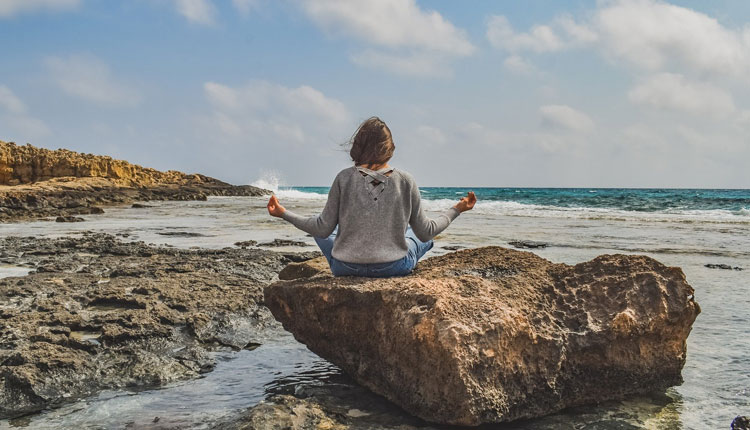Meditation and Mindfulness for Autism
Meditation and mindfulness for autism have gained wide attention as valuable treatments for autism spectrum disorders (ASD). What is the difference between mindfulness and meditation?
The Depok Chopra Center explains it thusly: meditation is an intentional practice, where you focus inward to increase calmness, concentration and emotional balance, bringing all your awareness to your breath, consciously guiding the mind toward an anchor or a single point of focus. In meditation, you typically spend a focused amount of time, anywhere from a minute to an hour or more, in which you are tuned inward.
Mindfulness is all about being aware of existing fully in the moment. It centers on the senses — what do you see/hear/smell/touch/taste. When you are being actively mindful, you are noticing and paying attention to your thoughts, feelings, behaviors and movements and also to the effects you have on those around you.
Mindfulness and Meditation overlap. Each and both have been extensively studied and shown to decrease stress. David Black, Ph.D., Director of The Center for Assessment and Treatment (CAAT), explains that the four components of stress to be novelty, unpredictability, perceived threat and low sense of control. ASD individuals are wired for stress!
Thankfully, scientists have proven through MRI studies that meditation literally changes the brain to reduce stress. Four regions of healthy brain function (Left Hippocampus, Posterior Cingulate, Pons, The Temporo Parietal Junction) are strengthened while one area responsible for anxiety, fear and general stress (the amygdala), shrinks. Also known as the brain’s threat detector, the amygdala has been shown by researchers to play a crucial role in autism. Remarkably, a practice as simple as natural breathing can change your life.
Okay, sounds good, now what?
I’ve known for a long time that my now-adult son with autism would benefit from meditation and mindfulness, but didn’t known how to get from here to there. When he was upset, I would exhort him to take deep breaths and he would exaggeratedly huff and puff then start screaming again. I took him to a mindfulness class but he was so excited to be around other kids he couldn’t contain himself during the quiet time to get to the part where he got to socialize. And having to sit still on cue made him more anxious than ever.
Then I tried to entice him with his hero, David Lynch, by telling him meditation is how Lynch gets all his creative ideas and that Lynch is changing the world through his foundation that teaches transcendental meditation to at-risk groups. Well, that went sideways when my son began obsessing about which mantra to use and what horrible fate would befall him if he used the wrong one.
Then came the pandemic and sheltering in place and our mutual stress levels were off the charts. My nerves were raw and my bottomless well of patience had run dry. I put out a cry for help on a neighborhood Facebook forum asking if someone could teach my son meditation for free. A lovely and wise neighbor answered my prayer and met me and my son at a beautiful Seattle park. She told us that she had lupus and total kidney failure which sent her on a quest for healing. She meditated and studied Chinese medicine until she became a doctor and healed herself.
She asked if I meditate. I said, “not formally” and I was aware she already knew that. “You and your son need to meditate together.” Ah! She read me like a book — the caregiver not taking care of herself, the child hypersensitive to the parent’s mood and the parent feeling like the center that does not hold.
The doctor instructed us to do the following:
“One minute at a time. Breathe in ‘one,’ out ‘two,’ up to 10 and start over. If your attention wanders, start over at one. Your mind is in a rut and you fill in the rut with sand so your mind becomes a smooth pathway. The sand is one minute of breathing — keep filling the rut one minute at a time and it will change the structure of your brain. Your breath is an anchor — keep coming back to your anchor.”
She bid us farewell and said she would be in touch.
At first, I didn’t think my son would do it. “We’ve been given a gift, accept it,” I said as we walked back from the lake through the tall grasses to the car. He conceded that he would try.
That was a couple of weeks ago. At first, my son meditated out of obligation, but soon into it he whispered, “I feel better,” upon opening his eyes.
Now he’ll ask for more minutes. Most promisingly, he reports when he feels anxious and asks to meditate with me for a minute, heading off what would’ve been a spectacular meltdown. Sometimes, he will tell himself he needs to meditate. Self-regulation seems more than a lofty dream.
There’s a notion that there are two paths in life: One path is easy to get on but almost impossible to stay on. The other is a path that is almost impossible to get on, but once on it, you’re assured of your destination.
For us, the path forward began with a single minute of breathing.
# # #
Resources for Mindfulness Activities:
• Six Simple Mindfulness Practices for Kids with Autism
• 15 Mindfulness and Relaxation Apps for Kids with Anxiety
• 10 Mindfulness Activities You Can Try Today
• David Lynch Foundation

